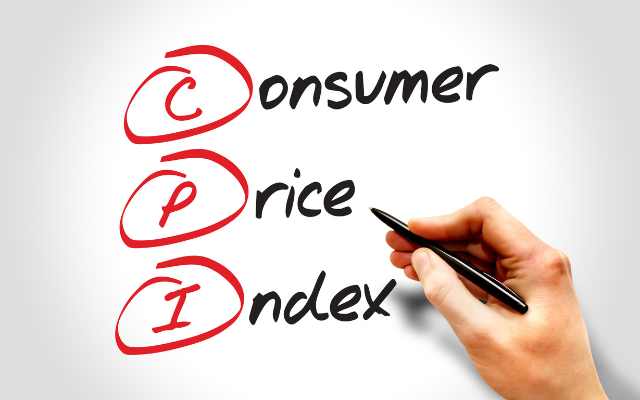Consumer Price Index (CPI) Explained: What It Is and How It’s Used

The Consumer Price Index (CPI) is a measure of the average change over time in the prices paid by consumers for a basket of goods and services. It is one of the most widely used indicators of inflation and changes in purchasing power.
The CPI is calculated by the Bureau of Labor Statistics (BLS) in the United States and similar organizations in other countries. The basket of goods and services included in the CPI is designed to represent the average consumption patterns of a typical consumer. The prices of these items are collected regularly, and the CPI is updated monthly or quarterly, depending on the country.
The CPI is used for a variety of purposes, including adjusting social security payments, wage contracts, and government benefits to keep pace with inflation. It is also used by economists and policymakers to analyze economic trends and make decisions about monetary policy.
One of the main criticisms of the CPI is that it may not accurately reflect the changes in the cost of living for different segments of the population, such as low-income households, who may have different consumption patterns and face different inflationary pressures. For this reason, alternative measures of inflation, such as the Personal Consumption Expenditures (PCE) price index, have been developed.
Overall, the Consumer Price Index is an important tool for measuring changes in the cost of living and is widely used by individuals, businesses, and governments to make decisions about prices, wages, and economic policy. However, it is important to understand its limitations and consider alternative measures of inflation to get a complete picture of the state of the economy.
Understand of CPI
The basket of goods and services included in the CPI is meant to represent the average consumption patterns of a typical consumer. The prices of these items are collected regularly and used to calculate the CPI, which is typically updated on a monthly or quarterly basis. The CPI is calculated by taking the weighted average of the prices of the goods and services in the basket, where the weights reflect the importance of each item in the average household’s budget.
The CPI is used for a variety of purposes, including:
- Adjusting government benefits: Social security payments, pensions, and other government benefits are often tied to the rate of inflation as measured by the CPI.
- Setting wage contracts: Many wage contracts include cost-of-living adjustments based on the CPI, so that workers’ real wages keep pace with inflation.
- Analyzing economic trends: The CPI is used by economists and policymakers to analyze economic trends and make decisions about monetary policy.
It’s important to note that the CPI has some limitations and criticisms. For example, it may not accurately reflect changes in the cost of living for different segments of the population, such as low-income households, who may face different inflationary pressures. Additionally, the way the basket of goods and services is constructed and the weights assigned to each item can impact the accuracy of the CPI as a measure of inflation.
Despite its limitations, the Consumer Price Index remains one of the most widely used measures of inflation and provides valuable insight into changes in the cost of living over time.
Types of Consumer Price Index
There are several types of Consumer Price Index (CPI), including:
- Headline CPI: This is the most widely reported measure of inflation, and it reflects the average change in the prices of a basket of goods and services consumed by households.
- Core CPI: This measure of inflation excludes certain volatile items such as food and energy prices, and is considered to provide a more accurate reflection of underlying inflation trends.
- Urban CPI: This measure of inflation is specific to urban areas and reflects the average change in prices of goods and services consumed by urban households.
- Rural CPI: This measure of inflation is specific to rural areas and reflects the average change in prices of goods and services consumed by rural households.
- National CPI: This measure of inflation is specific to a country and reflects the average change in prices of goods and services consumed by all households in the country.
- Regional CPIs: These measures of inflation are specific to different regions within a country and reflect the average change in prices of goods and services consumed by households in those regions.
Each type of CPI provides a different perspective on inflation, and all of them play an important role in understanding changes in the cost of living over time. The most widely used measure of inflation is the headline CPI, as it provides a broad overview of changes in the cost of living for households in a specific area.
CPI Formulas
The Consumer Price Index (CPI) is calculated using a basket of goods and services that represents the average consumption patterns of households. The formula for calculating the CPI is:
CPI = (Cost of basket of goods and services in current period / Cost of basket of goods and services in base period) x 100
The basket of goods and services is determined by surveying a representative sample of households to determine their consumption patterns. The cost of the basket in the current period is determined by summing the prices of each item in the basket and weighting each item based on its relative importance in the average household’s consumption patterns.
The base period is a fixed time period used as a reference point for calculating the CPI. Typically, the base period is set to 100, so the CPI is expressed as an index number with the base period equal to 100. The cost of the basket in the base period is also determined by summing the prices of each item in the basket and weighting each item based on its relative importance in the average household’s consumption patterns.
The calculation of the CPI is typically performed on a monthly or quarterly basis, and the resulting index number is used to track changes in the cost of living over time. The CPI is widely used as a measure of inflation, as it provides a way to track changes in the cost of living for households over time and to compare changes in the cost of living across different regions or countries.
CPI Categories
The Consumer Price Index (CPI) is typically divided into several categories, each representing a different aspect of the cost of living. These categories are:
- Food and Beverages: This category includes the prices of food and non-alcoholic beverages consumed by households.
- Housing: This category includes the prices of shelter, water, electricity, gas, and other fuels.
- Clothing: This category includes the prices of clothing and footwear.
- Transportation: This category includes the prices of transportation services and goods, such as public transportation, gasoline, and vehicles.
- Medical Care: This category includes the prices of medical services, hospital services, and medical goods.
- Education and Communication: This category includes the prices of education and communication services and goods, such as tuition, books, and telecommunication services.
- Other Goods and Services: This category includes the prices of other goods and services not included in the other categories, such as personal care products and services, recreation, and entertainment.
The basket of goods and services used to calculate the CPI is determined based on the relative importance of each category in the average household’s consumption patterns. The weights of each category are determined by surveying a representative sample of households and summing the relative shares of each category in the households’ total consumption expenditure. The resulting weights are used to determine the relative importance of each category in the calculation of the CPI.
How Is the CPI Used?
The Consumer Price Index (CPI) is widely used in economics and by governments, businesses, and individuals for a variety of purposes, including:
- Inflation Measurement: The CPI is used as a measure of inflation, which is the general increase in the prices of goods and services over time. This information is important for governments, businesses, and individuals as it affects the cost of living and purchasing power.
- Monetary Policy: The CPI is used by central banks to set monetary policy and guide the economy. If inflation is too high, central banks may raise interest rates to reduce demand and control inflation. If inflation is too low, central banks may lower interest rates to stimulate demand and increase inflation.
- Wage and Salary Adjustments: The CPI is used to adjust wages, salaries, pensions, and social security benefits to keep pace with the rising cost of living.
- Cost of Living Adjustments: The CPI is used to adjust the cost of living in contracts and agreements, such as rental leases and government contracts.
- Gross Domestic Product (GDP) Deflator: The CPI is used as a deflator to calculate the real value of the Gross Domestic Product (GDP), which is the total value of goods and services produced in a country. The real value of GDP takes into account the effects of inflation.
In conclusion, the CPI is a widely used index that provides important information about inflation and the cost of living, and is used for a variety of purposes in economics, government, business, and individual decision making.
CPI vs. Unemployment
The Consumer Price Index (CPI) and unemployment rate are two important economic indicators that are used to gauge the health of an economy.
- Consumer Price Index (CPI): The CPI measures the average change over time in the prices of goods and services consumed by households. It provides information about inflation and the cost of living.
- Unemployment Rate: The unemployment rate measures the percentage of the labor force that is unemployed but actively seeking employment. It provides information about the demand for labor and the level of slack in the labor market.
The relationship between the CPI and the unemployment rate can be complex and can vary over time. Generally, a low unemployment rate is associated with higher inflation and higher wages, as firms compete for a limited pool of workers. On the other hand, a high unemployment rate is associated with lower inflation and lower wages, as firms have less pricing power and workers have less bargaining power.
However, this relationship is not always straightforward and can be influenced by a variety of factors, such as productivity, global economic conditions, and monetary policy.
In conclusion, the CPI and the unemployment rate are both important indicators of the health of an economy, and policymakers and economists use both of these measures in making decisions about monetary policy and other economic policies.
Critiques of CPI Methodology
The Consumer Price Index (CPI) is a widely used measure of inflation, but it is not without its criticisms. Here are some of the main critiques of the methodology used to calculate the CPI:
- Substitution bias: The CPI assumes that consumers are able to easily switch to cheaper substitutes when prices go up, but in reality, this may not always be the case. For example, if the price of beef goes up, consumers may not be able to switch to chicken if it is also becoming more expensive. This can lead to an over-estimation of inflation.
- Quality adjustment: The CPI adjusts for changes in quality over time, but this process can be subjective and prone to error. For example, quality improvements in technology products such as smartphones can make it difficult to compare prices over time.
- Outlet substitution bias: The CPI assumes that consumers can easily switch to different outlets when prices go up, but this may not always be the case. For example, if the price of gas goes up at one station, consumers may not be able to easily switch to a cheaper station if they are far away.
- New product bias: The CPI may understate inflation if it fails to capture the impact of new products that enter the market. For example, the introduction of new technology products such as smartphones can result in lower prices, but the CPI may not fully capture the impact of these new products on overall prices.
- Geographical adjustment: The CPI is calculated at the national level, but prices can vary greatly from region to region. The CPI may overstate or understate inflation for different regions depending on the extent of price differences.
Overall, while the Consumer Price Index (CPI) is widely used, it is not without its criticisms and limitations. Some economists argue that alternative measures of inflation, such as the Personal Consumption Expenditures (PCE) price index, may be a better measure of inflation and a more accurate indicator of the cost of living.
How Is the Consumer Price Index Used?
The Consumer Price Index (CPI) is a widely used measure of inflation and a significant tool for governments, economists, and consumers. Some of the ways the CPI is used are:
- Inflation Measurement: The CPI measures changes in the cost of living and is used as a gauge of inflation, which is the rise in prices of goods and services over time.
- Cost-of-living Adjustments: The CPI is used to adjust social security benefits, income tax brackets, and other government programs that are tied to changes in the cost of living.
- Monetary Policy: The Federal Reserve uses the CPI, among other measures, to determine monetary policy and make decisions about interest rates.
- Contractual Adjustments: The CPI is often used as an index in contracts, such as labor agreements, rent-controlled leases, and pension plans.
- Economic Analysis: The CPI provides valuable information for economists and businesses to analyze economic trends and make informed decisions.
Overall, the Consumer Price Index is a valuable tool for governments, consumers, and businesses to monitor changes in the cost of living and inflation, make adjustments to spending, and inform economic decision-making.
How Is the CPI Calculated?
The Consumer Price Index (CPI) is calculated by the Bureau of Labor Statistics (BLS) of the U.S. Department of Labor. The calculation of the CPI involves the following steps:
- Selection of a basket of goods and services: The BLS chooses a representative basket of goods and services that households typically purchase, such as food, housing, transportation, medical care, and recreation.
- Collection of price data: The BLS collects data on the prices of the items in the basket from a sample of retail stores, service providers, and rental units.
- Weighting of the basket: The BLS assigns weights to each item in the basket based on its estimated share of consumer spending. For example, housing has a higher weight than recreation because it typically accounts for a larger share of consumer spending.
- Calculation of the index: The BLS uses the weighted average of the prices of all items in the basket to calculate the index for a specific period. The base period, typically set at 100, is used as a reference point to compare prices over time. The index for a given period is calculated by dividing the cost of the basket of goods and services in that period by the cost of the same basket in the base period and multiplying by 100.
- Calculation of inflation rate: The BLS calculates the inflation rate by subtracting the index of the previous period from the current period and dividing the difference by the previous period’s index. The result is expressed as a percentage change.
The BLS calculates the Consumer Price Index for two population groups: the urban wage earner and clerical worker (CPI-W) and the urban consumer (CPI-U). The CPI-U is a broader measure that covers all urban consumers, while the CPI-W covers urban wage earners and clerical workers.
What Are Some Criticisms of the CPI?
The Consumer Price Index (CPI) is widely used as a measure of inflation, but it has faced criticism over its methodology and accuracy. Some of the criticisms include:
- Substitution Bias: The CPI formula assumes that consumers will switch to cheaper alternatives when prices rise, but this is not always the case in reality.
- New Product Bias: The CPI formula does not account for new products that are introduced into the market, leading to a potential overstatement of inflation.
- Quality Bias: The formula assumes that quality remains constant when prices change, but this is not always the case.
- Outlet Bias: The CPI formula assumes that consumers will only shop at a fixed set of stores, but this is not always the case in reality.
- Owner’s Equivalent Rent (OER) Bias: The formula for measuring housing costs, OER, has been criticized for not accurately reflecting actual housing costs.
Overall, the CPI is a useful tool for measuring inflation, but it is important to understand its limitations and criticisms when using it to make economic decisions.
- What is a Cryptocurrency and how does it work?
- What are Mutual funds? Benefits, Risks, and More
- How to Secure Your Account from UPI Frauds
Conclusion
The Consumer Price Index (CPI) is a widely used measure of inflation that helps to track changes in the prices of goods and services over time. The CPI is used by governments, central banks, economists, and businesses to make important economic decisions. However, it is important to note that the CPI has faced criticism over its methodology and accuracy. Despite its limitations, the CPI remains a valuable tool for measuring inflation and is used by many organizations to make informed decisions.




